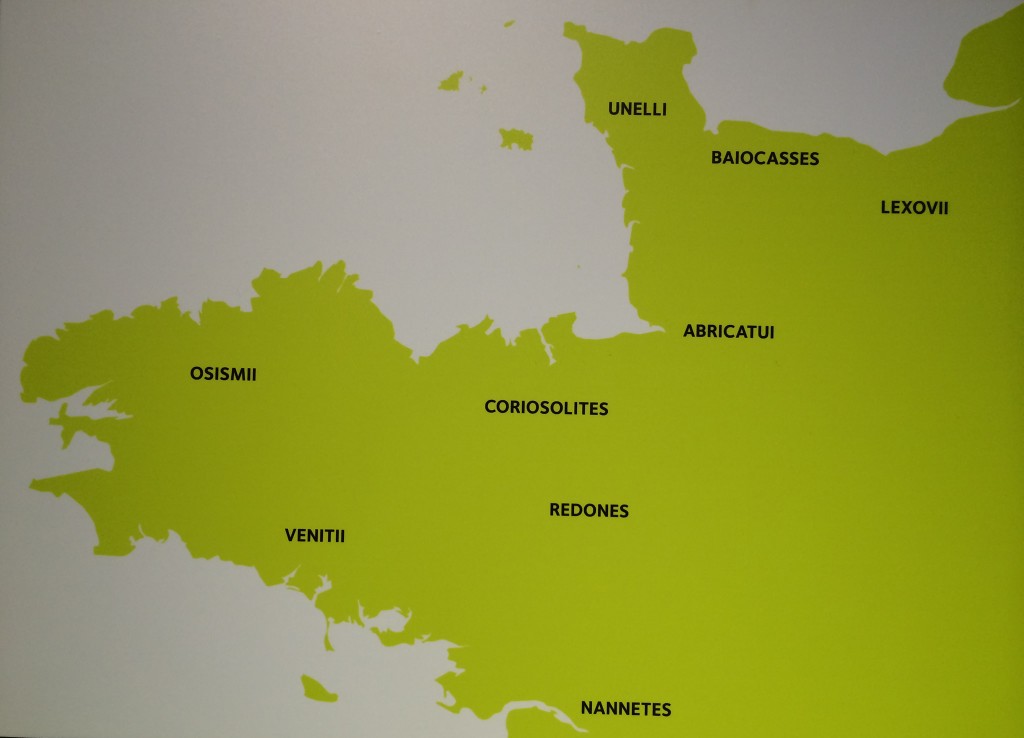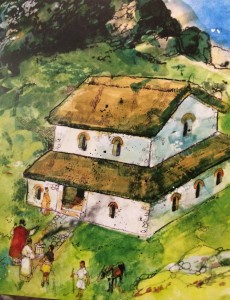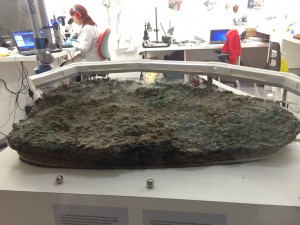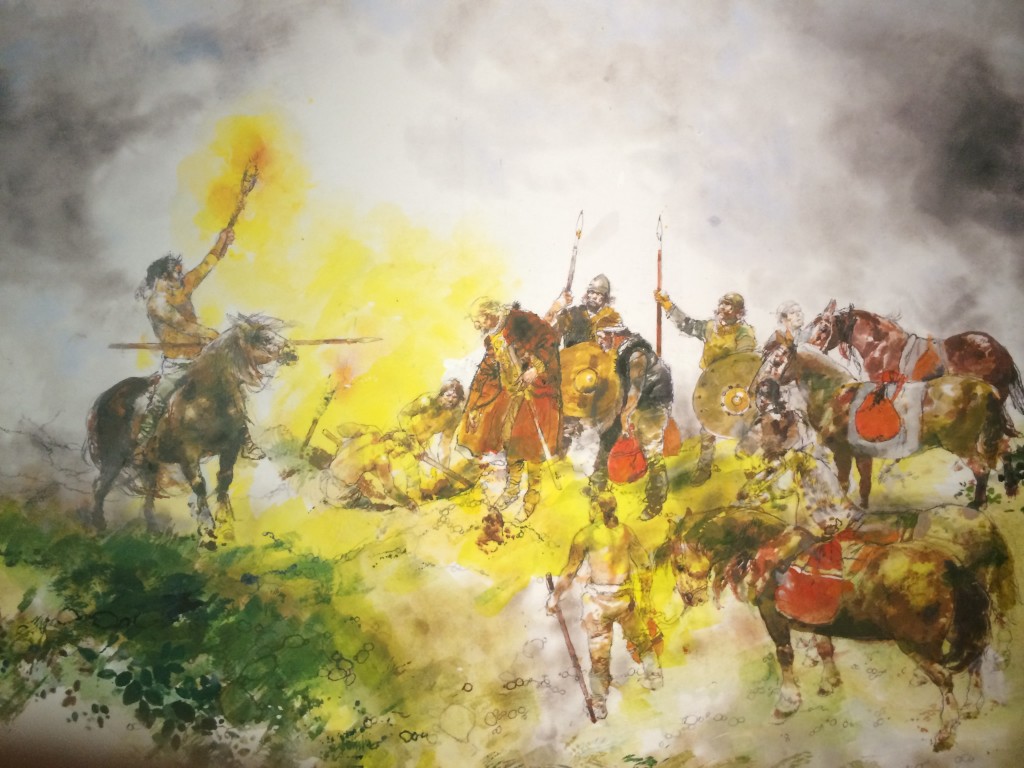When Worlds Collide : The Romans and Jersey’s Celtic Treasure Hoards
Jersey is unique in many ways but there is one that is particularly curious. Of all the channel Islands it seems to have had the most treasure hoards of all.
No less than 12 have so far been discovered. The latest, the Catillon II hoard discovered in June 2012, had nearly 70,000 coins in it plus several golden torqs. In January 2017 the last coin was excavated from the hoard by the archaeologists and conservationists. One of the most curious things though is that 4 of these hoards, including the Catillon II hoard, were all buried at the same time – the mid 1st Century B.C. – A mystery worthy of Hercule Poirot.
Clearly something was going on that was driving people to bury their treasure in the ground for safe keeping. What is more, something obviously happened to those people because they never came back to collect it !
During the mid 1st century B.C. Rome’s legions, under Julius Caesar, were on the move in Gaul (modern day France) – and just across the water from the Channel Islands – so it is against this backdrop we must investigate these burials. In this article we expand on our earlier article Ancient Celtic offshore Banking and look deeper into the world of the Celts and the Romans and the forces swirling in and around the Channel Islands at that time.
UNCOVERING CELTS AND ROMANS
 In 2012 a hoard of about 70,000 coins was found in a field in Jersey. Jersey has more Armorican or Celtic coins than anywhere else in Europe. The coins were made about 2,000 years ago – when Julius Caesar and his Roman legions were conquering Gaul and the Channel Islands were changing from a Celtic way of life to a Roman style of living.
In 2012 a hoard of about 70,000 coins was found in a field in Jersey. Jersey has more Armorican or Celtic coins than anywhere else in Europe. The coins were made about 2,000 years ago – when Julius Caesar and his Roman legions were conquering Gaul and the Channel Islands were changing from a Celtic way of life to a Roman style of living.
1. The Celtic World
Three hundred years before the birth of Christ, the Channel Islands were firmly in the Celtic world. Today we know these areas as Brittany and Normandy and the larger islands are Jersey, Guernsey, Alderney and Sark. The Romans referred to this region as Armorica and the people as Gauls.
Armorica
By the time the Romans arrived the region was settled by a number of different tribes whom we know by the names the Romans gave them. The closest tribes to the Channel Islands were the Unelli to the east and the Coriosolites to the south. The Islands were firmly in this wider Armorican world.
2. Celtic Society
Most of the written records describing the Celtic world were produced by Romans who saw these Celtic people as full of contradictions. They wrote about their warlike practices – raiding, cattle theft, taking heads as war trophies, human sacrifice, and the mysterious group called druids. But as a people they valued poetry and art, and women could play a prominent role in everyday life.
The majority of the Celtic population in the islands were farmers or fishermen although rich burials found in Guernsey show that some element of the traditional Celtic warrior society were adopted in the island. No similar burials have been found in Jersey although promontory forts like Catel de Rozel do imply a warrior society and the expectation of being attacked.
The Druids
The druids were the intelligentsia of Celtic society they could be either male or female. During the 20 years it took to become a druid they studied mathematics, natural and political science, history, law and religion.
3. Clash of Cultures
In the middle of the 1st century BC Julius Caesar was leading his Roman legions over the Alps against the peoples of Gaul (modern day France). By 56 BC three Roman legions were attacking the people of Armorica. By 52 BC the Roman conquest was complete and all of Armorica, including the Channel Islands, was part of the Roman World.
It is believed that the coin hoards date from this time. If we are right, then they represent a shift in the history of the Channel Islands as they mark the struggle between an independent Celtic world or a subservient Roman future.
Other Hoards Dating from the Same Time
1. La Marquandarie Hoard A large hoard containing about 12,000 coins, nearly all were Coriosolitae with a handful of other Gaulish tribes. They were found during building work in 1935.
2. Rozel Hoard A small hoard ofCoriosolite and Roman.coinsfrom Rozel, Jersey found in a pot with a stone lid in 1883.
3. Le Catillon I Hoard In 1957 a hoard of over 2,500 Celtic coins representing tribes in Armorica and Gaul as well as in Southern Britain was unearthed on farmland at Le Catillon, Grouville. The hoard also included several pieces of jewellery.
4. Becoming Roman
 When the Channel Islands became part of the Roman world life initially would have carried on much as it had. Gradually the islanders traditional Celtic/Gaulish way of life changed as more Roman ways were introduced and adopted. We generally refer to this new culture as Gallo-Roman. The islands were no longer on the edge of things, they were part of a large unified empire and trading network.
When the Channel Islands became part of the Roman world life initially would have carried on much as it had. Gradually the islanders traditional Celtic/Gaulish way of life changed as more Roman ways were introduced and adopted. We generally refer to this new culture as Gallo-Roman. The islands were no longer on the edge of things, they were part of a large unified empire and trading network.
Guernsey provides more evidence of this process of Romanisation because St Peter Port developed around its natural deep water harbour into a small town and trading centre, welcoming ships passing through carrying wines and exotic goods from the Mediterranean and grain and furs from the Britain and further north. Jersey remained more of a Celtic backwater because it lacked decent harbours although more evidence is coming to light.
Despite these change the majority of the Gallo-Roman population in the islands would have remained farmers or fishermen and the new wealthy class were the merchants and traders rather than warriors. It was these people who benefited most from the stability of the empire and who were perhaps the most Romanised with the richest living in villas made of stone and roofed with tiles.
The Gallo-Roman Fanum
 By the 3rd century AD the local Gallo-Roman ponulation had built a small temple known as a fanum at the base of the Pinade rock in St Ouen. This site had been a religious site since the Neolithic period over two and a half thousand years earlier.
By the 3rd century AD the local Gallo-Roman ponulation had built a small temple known as a fanum at the base of the Pinade rock in St Ouen. This site had been a religious site since the Neolithic period over two and a half thousand years earlier.
5. The Beginning of the End
After nearly 300 years of a unified Roman empire, attacks from the north saw the first signs of a break up which would lead to regional leaders assuming more power, a greater emphasis on maritime power, and people once again burying their wealth.
For a short time – AD 260-274 – there was a Gallic Empire (Germannia. Britannia, Gaul and for a white Hispania) in the west and a Palmyrene Empire (Syria, Palestine and Egypt) in the east.
From AD 286 to 296 there was a breakaway Britannic empire which was composed of Britain and North West Gaul.
It is about this time that the names of the Channel Islands first appear in documents – it is thought that Alderney was Riduna, Guernsey was Lesia or Lisia and Jersey was Andium.
6. Some Final Thoughts : Back to The Catillon II Hoard
 So as we have seen during periods of social and political instability, and without the benefits of banks, people resorted to burying their wealth for safe keeping. But what do we know of the hoard buried as the Roman world began intruding on the Celtic world in the Channel Islands?
So as we have seen during periods of social and political instability, and without the benefits of banks, people resorted to burying their wealth for safe keeping. But what do we know of the hoard buried as the Roman world began intruding on the Celtic world in the Channel Islands?
The coins making up the bulk of the hoard are made from a mix of silver and copper. They would originally have looked shiny and silver but the copper has corroded under the ground and that is why the hoard is now dark green.
Whilst the archeologists picked apart the solid mass cold water mist was ‘poured’ over the top of the hoard to stop it drying out. It was done because they’d discovered remains of plants, insects and even hairs between the coins. These would’ve become useless for study if they’d dried out but if kept damp they may tell us much about their surroundings two thousand years ago.
Archaeologists may soon know also what crops were being grown in their fields and even what time of year the hoard was buried.
The Burying of the Hoard
In this reconstruction Victor Ambrus shows a chieftain and his bodyguard guarding the burial of the hoard which has been brought to the place in secret by pack horses.







